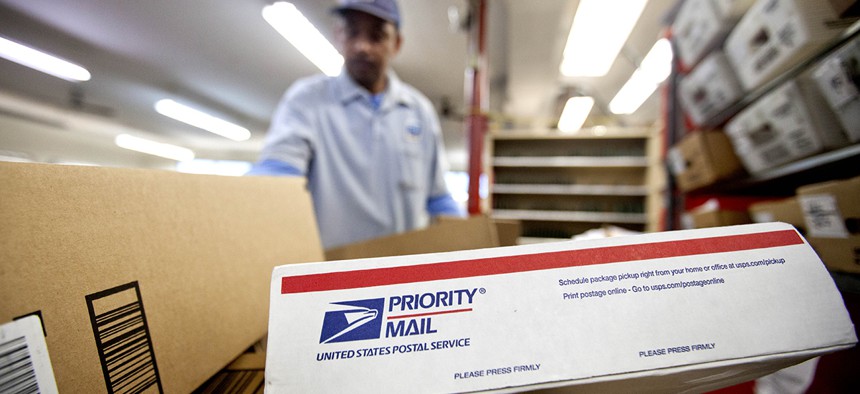How the Postal Service Regained Customers’ Trust After Throwing Packages

Packages wait to be sorted in a Post Office. David Goldman/AP File Photo
In today’s era of retail behemoths like Amazon and Wal-Mart and delivery giants like FedEx and UPS, improved customer service has helped keep the Postal Service competitive.
The U.S. Postal Service has more employees—600,000-plus—than the city of Miami has people, and under the leadership of Postmaster General Megan Brennan, each employee “owns customer experience” for almost 1 billion retail customer visits per year.
The Postal Service’s focus on customers is not new—Benjamin Franklin was its first postmaster general—but in today’s era of retail behemoths like Amazon and Wal-Mart and delivery giants like FedEx and UPS, improved customer service has helped keep the Postal Service competitive.
At times, the Postal Service has provided the best customer service in government, and currently sits third in Forrester’s most recent Customer Experience Index among federal agencies, behind the National Park Service and the State Department’s Bureau of Consular Affairs.
» Get the best federal technology news and ideas delivered right to your inbox. Sign up here.
What’s key, though, for the Postal Service is how it competes with private-sector competitors because, as Jim Cochrane, chief marketing and sales officer for the Postal Service explained Monday, money spent with other deliverers is revenue the cash-strapped Postal Service isn’t collecting. And right now, the extreme emphasis on customer service has it competing quite well.
In Forrester’s latest index, which measured customer experience among 319 brands in 21 major industries in the second quarter, the Postal Service scored 58, one percentage point ahead of UPS and 10 ahead of FedEx.
“Every dollar of our revenue is at risk,” said Cochrane, speaking at an event held by Forrester in Washington, D.C. “We are an agency that competes against the private sector and every day has to deliver value that withstands that pressure. Customer experience is the final frontier for us, and every interaction matters.”
The little things, Cochrane said, sometimes matter the most. One clear example: the “Say No to the Throw" campaign the Postal Service launched in 2015.

The campaign began after customers began posting home surveillance videos—like this one—on YouTube. Not surprisingly, customers weren’t happy to learn mail carriers sometimes chucked their packages like a quarterback heaves a football. Videos went viral and the Postal Service’s image took a hit, Cochrane said.
Now “Say ‘No’ to the Throw” posters adorn post offices nationwide, and the campaign also included video, talks and other communications designed to emphasize customer service and exemplary customer service.
It’s been a “worthwhile investment,” Cochrane said, because the Postal Service’s internal data shows its most satisfied customers drive 2.5 times more revenue for the agency than its least satisfied customers. In other words, happy customers spend more—so keeping customers happy directly affects business.
“That little poster has done a lot for us,” he said.
With holiday season fast approaching, Cochrane said he expects the “Say No to the Throw” campaign to kick in again, likely with videos, posters and continued education for front-line carriers. What Cochrane said he hopes the Postal Service won’t see are more viral videos of carriers pretending they’re throwing Hail Mary passes to the end zone.
“My hope is you won’t see us up there rolling things on the porch,” Cochrane said.
NEXT STORY: Cruz seeks to block internet transition






